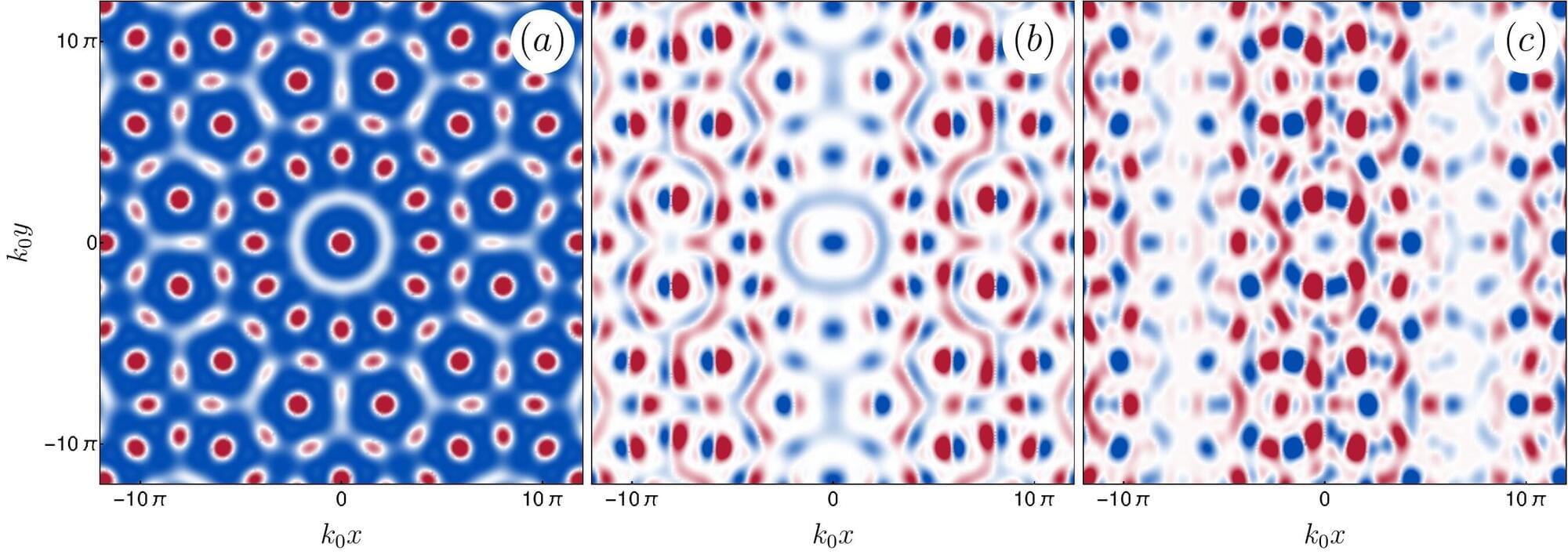Quasicrystals, exotic states of matter characterized by an ordered structure with non-repeating spatial patterns, have been the focus of numerous recent physics studies due to their unique organization and resulting symmetries. Among the quasicrystals that have sparked significant interest among the physics community are so-called quantum quasicrystals, which are comprised of bosons (i.e., subatomic particles that have spin in integer values, such as 0, 1, 2, and so on, and can occupy the same quantum state simultaneously).
Researchers at the Max Planck Institute for the Physics of Complex Systems (MPIPKS) recently introduced a new theoretical framework that describes low-energy excitations in bosonic quantum quasicrystals. Their newly devised theory, outlined in a paper published in Physical Review Letters, is an extension of conventional theories of elasticity, which also accounts for the unique symmetries of quantum quasicrystals.
“This paper is part of an ongoing collaboration with two colleagues, Prof. Francesco Piazza and Dr. Mariano Bonifacio, which began in 2022 when I was a guest scientist at MPIPKS in Dresden, Germany,” Alejandro Mendoza-Coto, first author of the paper, told Phys.org.
